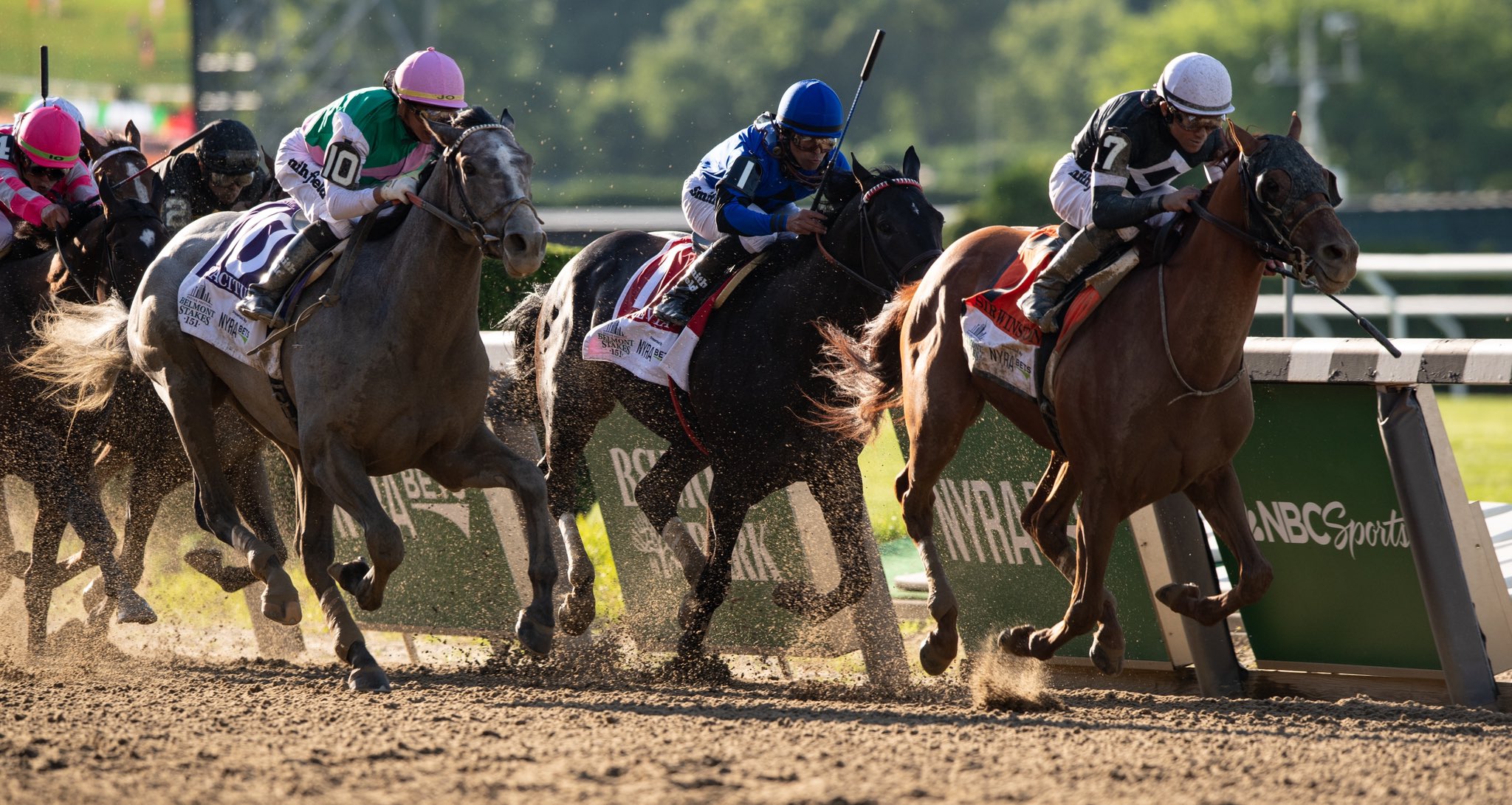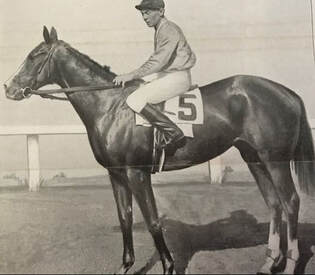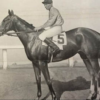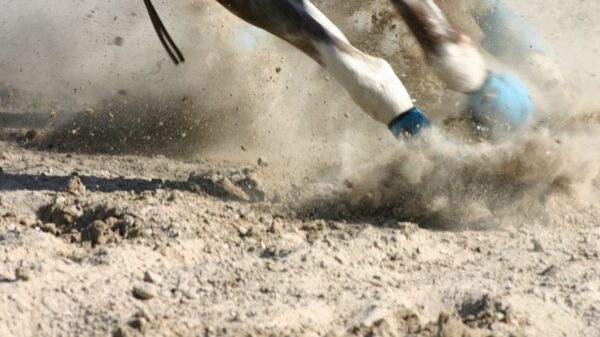By: Rinaldo Del Gallo

Rinaldo Del Gallo, III
After Gallant Fox won the Kentucky Derby on Saturday, May 17, 1930, he did not race in the Preakness. That is because he already won the Preakness on Friday, May 9, 1930. For many years at the end of the late 19th Century and early 20th Century, many Kentucky Derby winners did not run in the Preakness, and the American Triple Crown was not a “thing.”
Ironically, it was the foreign horse War Cloud that would be the first to run in all three branches of the American Triple Crown: he was fourth in the Kentucky Derby to long shot Exterminator; War Cloud won the Preakness in 1918, and then was second in the 11-furlong Belmont.
The 1924 Kentucky Derby winner Black Gold did not run in either the Preakness or Belmont. According to SportingNews.com, “Since the 1932, when the Kentucky Derby was permanently placed ahead of Preakness, there have only been 11 horses that won the derby but did not race. Five of the horses were kept out of the race due to rest. However, of the 11 that did not race at the Preakness Stakes, only two eventually went on to race at Belmont.”
In 1938 Lawrin was apparently “not eligible” and did not race in the Belmont, as was the case for Count Turf in 1951.

Rich Strike with Kentucky Derby Roses:
Photo Credt: Sara Elbadwi
A number of horses were injured and did not run in the Preakness or the Belmont: Hill Gail in 1952 in the first nationally televised Kentucky Derby; Swaps in 1955 (a split hoof wall in Swap’s right forefoot, incurred in January, had inflamed again); and Grindstone in 1996. Hill Gail (a son of Bull Lea) was never quite the same after the Preakness.
A number of horses rested for the Preakness and also did not enter the Belmont—Determine in 1954; Tomy Lee in 1959 (a foreign-born horse); and Spendabuck in 1985 (more on that below).
What of the two horses that ran won the Kentucky Derby, skipped the Preakness and then ran in the Belmont Stakes? As stated, Count Turf was not eligible to run in the Preakness in 1951 and ran in the Belmont finishing seventh, 20 lengths back. Gato Del Sal rested after his Kentucky Derby win in 1982 but entered the Belmont and took second losing by over 15 lengths. So, history is not kind, but this is a mighty small sample.
Count Turf was from the Reigh Count/Count Fleet/Count Turf three generations in the sire line winners of the Kentucky Derby, only matched by Pensive/Ponder/Needles of the Hyperion sire line.
Which brings me to the topic of the general state of the Preakness. There is one major disturbing trend—horses are running much less frequently these days, and it is becoming common to have horses that did not win the Kentucky Derby skip the Preakness to be well rested for the Belmont Stakes. This has resulted in the Preakness being a second-tier race in the past few years.
Let’s look at two recent years, ignoring the unusual 2020 season:
2021
Mandoloun was 2nd in the Kentucky and placed 1st after the disqualification of Media Spirit—he skipped the Preakness and Belmont. Hot Rod Charlie, who was second in the 2021 Kentucky Derby, skipped the Preakness and was second in the Belmont. Essential Quality was 3rd in the Kentucky Derby (after the DQ of Medina Spirit), skipped the Preakness, and won the Belmont. O’Besos, 4th in the Kentucky Derby, was next seen in the Matt Winn and was not in the other two classic races. Apart from Medina Spirit, you have to go to 5th place in the Kentucky Derby, Midnight Bourbon, until you see a horse that ran in the Kentucky Derby and ran in the Preakness—Midnight Bourbon skipped the Belmont. The horse that won the Preakness, Rombaeur was not in the Kentucky Derby—and so you see a pattern.
2019

Country House Kentucky Derby Apron
Photo Credit: Carson Dennis
In 2019, Kentucky Derby winner Country House never ran again after his Kentucky Derby win due to injury. (It is to be remembered that Maximum Security came in first but was disqualified.) Second place finisher (3rd to cross the finish line) Code of Honor next ran in the Dwyer, which he won, and then won the Travers skipping the Preakness, Belmont, Haskell and Jim Dandy. Tacitus came in 3rd in the Kentucky Derby (was 4th to cross the finish line), skipped the Preakness and came in 2nd in the Belmont.
You have to get down to Improbable, who was in 4th place in the Kentucky Derby (5th to cross the finish line) to find a horse that ran in the Kentucky Derby and then ran in the Preakness (he came in 6th in the Preakness). Game Winner came in 5th in the Kentucky Derby and ended his career in the Los Alamitos Derby which he won, and never ran in the Preakness or Belmont.
In 2019, Maximum Security made history being the first horse to cross the finish line of the Kentucky Derby, only to be disqualified the day of the race; Maximum Security skipped the Preakness and the Belmont, and next showed up in the Pegasus, the local prep for the Haskell—Maximum Security placed in the Pegasus to the fittingly named “King for a Day” and won the Haskell. (Dancer’s Image was disqualified, but days after the race, for using Bute.)
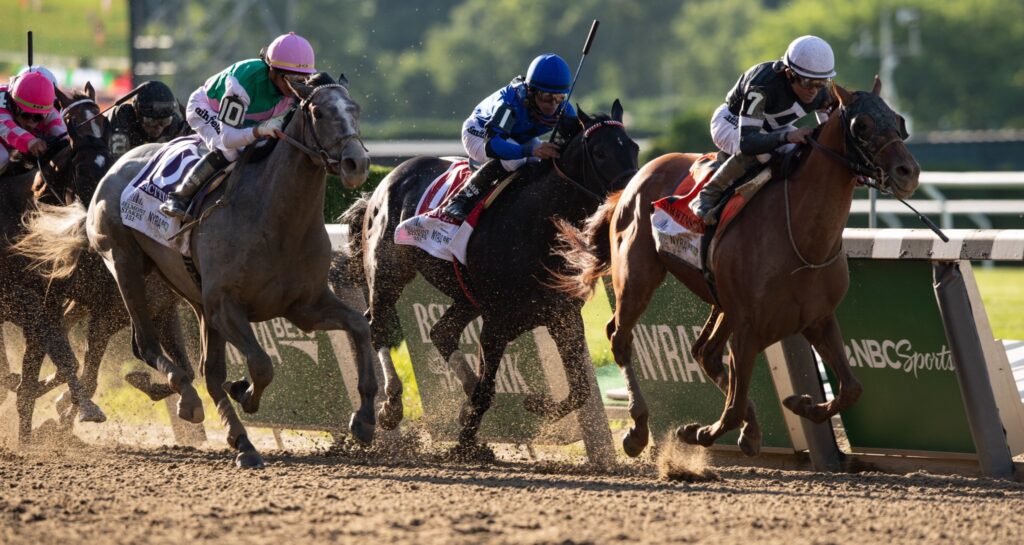
2019 Belmont Stakes
Photo Credit: Carson Dennis
A trend is emerging. If you ran in the Kentucky Derby, unless you won it and are shooting for a Triple Crown, skip the Preakness. Whether true or not (Andrew Beyer thinks it is not), most trainers believe that two weeks rest is just not enough, the existence of Triple Crown winners Justify and American Pharoah notwithstanding.
So, we have a depleted field and a purse of $1,000,000 that while respectable, actually pays less than the Arkansas Derby and equals the purse of the Louisiana Derby. This year’s Preakness Stakes purse is $1 million. It was $1.5 million in 2020, a decrease from a record $1.65 million in 2019.
It is not unimaginable for the Preakness to lose its prestige. They can continue to have it two weeks after the Kentucky Derby, but the price for this will be fields depleted of the best horses in the nation. The second is to raise the purse money. This might be done in conjunction with moving the horse race to Laurel Park, a nicer venue and superior facility than in Baltimore which is a place people avoid rather than are attracted to.
As mentioned earlier, it has happened before. Swaps wanted richer pots in California. Spend a Buck was pursuing a racing gimmick where if he won the Jersey Derby after the Kentucky Derby, he would (and did) receive a $2 million bonus. The deal also included having to win the Garden State and Cherry Mile Handicap.
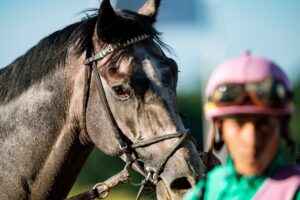
Tacitus
Photo Credit: Carson Dennis
It really doesn’t matter whether or not horses can race well on two weeks rest—it is the perception that they cannot that drives the situation. The Preakness is suffering what horse racing is in general suffering—at the top tier, horses are not racing that often. It is one thing to have a new fresh face or two. But part of the fun of the Triple Crown was watching horses trying to win each branch, facing old foes.
Now it’s a whole new bunch of horses, save for a few of the horses that finished at the back of the field in the Kentucky Derby and figure they have a stronger chance at a weaker link, the Preakness.
The end of the Preakness as a great race is not unimaginable. In 1890 it was run in Morris Park in New York, it was not run in 1891 and 1892 and 1893, and from 1894-1908 it was run in Gravesend, New York. That is a gap of 20 years of not being run at Pimlico or in Maryland at all.
Pay attention to the dates: Just before winning the Kentucky Derby on May 4, 1946, Assault came in 4th in the Derby Trial on April 30, 1946. If that doesn’t blow your mind, he won the Wood at Jamaica Park on April 20th, only ten days before his Derby Trial run. Omaha won the Wood on April 27, 1935, the Kentucky Derby on May 4, 1935, won the Preakness on May 11, 1935 (yes, a week’s rest), then ran in the Withers on May 25, 1935, where he came in 2nd to Rosemont, and then won the Belmont Stakes on June 8, 1935. His season was over by July though.
The difference between horse racing today and horse racing back then is quite considerable. While it may sound sacrilege, perhaps the Preakness should be three weeks if not four weeks after the Kentucky Derby.
This year, there will be an Epicenter and the filly Secret Oath in the Preakness. Perhaps the owners of Epicenter think the cutback of 1/16 of a mile will do his horse good to stretch out another quarter of a mile. That said, I long for the days when most of the better horses in the Kentucky Derby field raced in the Preakness.


